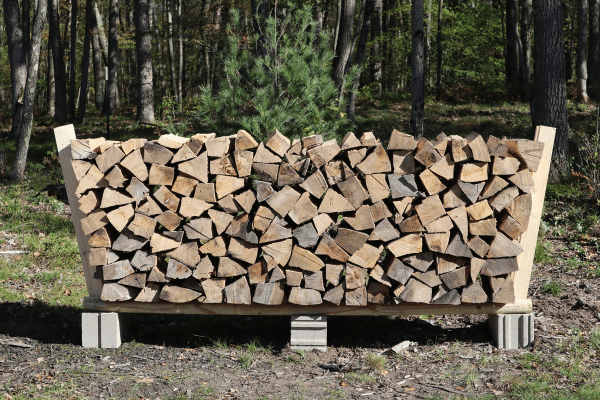
Introduction:
Maintaining and storing firewood is a crucial aspect of ensuring a steady and efficient supply for your fireplace or wood-burning stove. By taking on these tasks yourself, you not only save costs but also contribute to the sustainability of your heating source. In this guide, we’ll delve into DIY tips for maintaining and storing firewood to keep your home warm during the colder months.
Choosing the Right Firewood:
The first step in effective firewood management is selecting the right type of wood. Hardwoods like oak, maple, and hickory burn longer and produce more heat compared to softwoods. Ensure the wood is properly seasoned, meaning it has been dried for at least six months. Well-seasoned wood burns more efficiently and produces less creosote buildup.
Properly Seasoning Firewood:
Seasoning firewood is a critical process to reduce moisture content. Wet or unseasoned wood not only burns less efficiently but also leads to excessive smoke and creosote buildup in your chimney. Split the wood into manageable sizes and stack it in a dry, well-ventilated area. Elevating the woodpile slightly allows air circulation and accelerates the seasoning process.
Storing Firewood Correctly:
The way you store firewood plays a vital role in maintaining its quality. Stack firewood off the ground to prevent it from absorbing moisture. Use pallets or a dedicated firewood rack for elevation. Create a roof or cover to shield the woodpile from rain or snow, ensuring the wood remains dry and ready for use.
Maintaining an Organized Woodpile:
Organizing your woodpile not only improves its aesthetic but also aids in efficient usage. Arrange the firewood by size and type, placing the oldest wood at the front for easy access. This organization method ensures that you use the oldest wood first, maintaining a rotation that prevents any pieces from becoming overly seasoned.
Protecting Against Pests:
A well-organized woodpile is also less attractive to pests. Termites, ants, and other insects can be drawn to firewood, potentially causing problems in and around your home. Elevate the woodpile, inspect it regularly, and avoid stacking wood directly against the house to minimize the risk of pest infestations.
Regular Inspections for Mold and Mildew:
Moisture and improper storage conditions can lead to mold and mildew growth on firewood. Regularly inspect your woodpile for any signs of these issues. If you notice mold or mildew, move the affected wood to a dry area, and consider improving ventilation to prevent future occurrences.
Maintaining Chimney and Fireplace:
In addition to caring for the firewood, regular maintenance of your chimney and fireplace is essential. Schedule professional chimney cleanings annually to remove creosote buildup, ensuring safe and efficient operation. Inspect the fireplace and chimney for any signs of damage or wear, addressing issues promptly to prevent hazards.
Using a Firewood Moisture Meter:
Invest in a moisture meter to accurately gauge the moisture content of your firewood. This tool helps you determine when the wood is adequately seasoned and ready for use. Aim for a moisture content of 20% or lower for optimal burning efficiency and reduced emissions.
Avoiding Overstocking:
While it’s tempting to stockpile large quantities of firewood, avoid overstocking beyond your needs for the season. Overstocked woodpiles are prone to pest infestations and mold growth. Instead, maintain a manageable quantity, ensuring each piece is used within a reasonable timeframe.
Conclusion – DIY Firewood Mastery:
Maintaining and storing firewood yourself is a rewarding endeavor that ensures a reliable and efficient heat source for your home. By following these DIY tips, you can enjoy a cozy and warm atmosphere during the colder months while contributing to the sustainability of your heating system.
For additional insights and detailed guidance on maintaining and storing firewood yourself, visit Maintain and Store Firewood Yourself.










